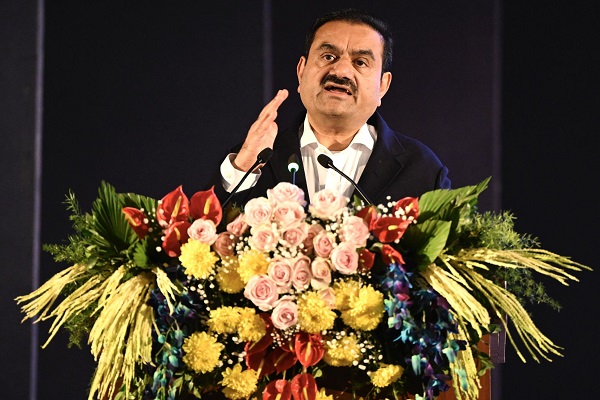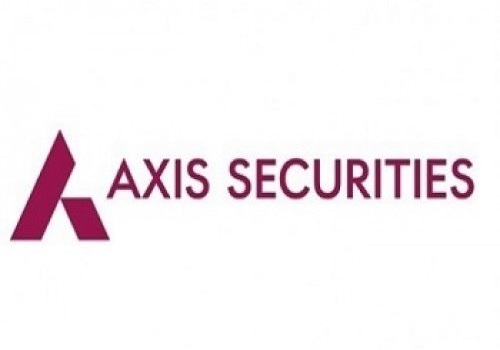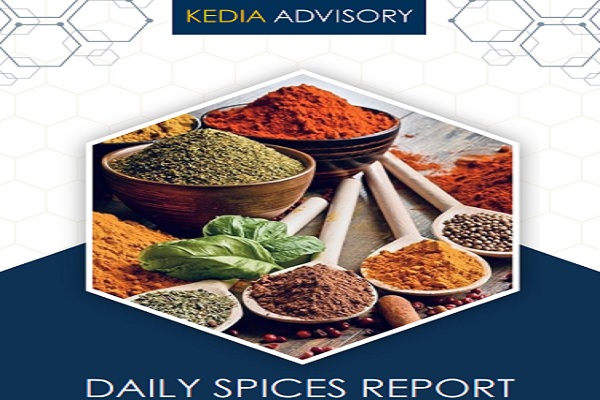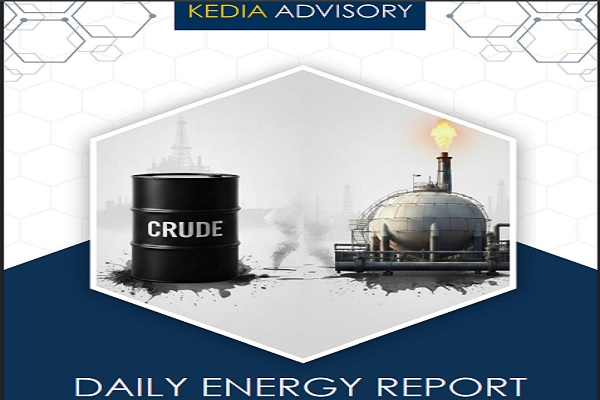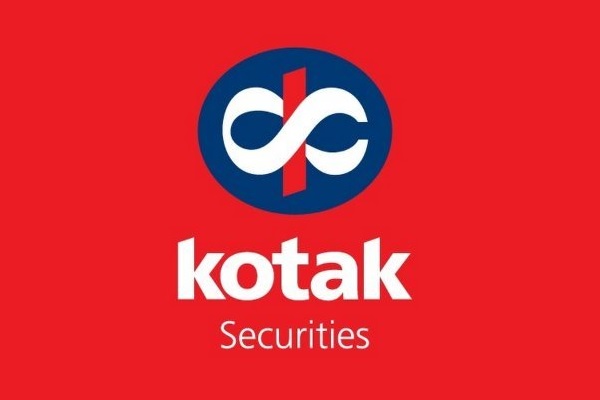Jeera trading range for the day is 19030-19390 - Kedia Advisory

Gold
Gold prices surged by 1.45% to settle at 101,204, buoyed by growing expectations of a U.S. Federal Reserve rate cut and heightened safe-haven demand amid escalating global uncertainties. Weak U.S. jobs data for July indicated potential cracks in the labor market, prompting markets to price in an 81% probability of a rate cut in September. Additionally, President Trump’s announcement of new tariffs—ranging from 10% to 41% on imports from multiple countries—reignited global trade tensions. Citi raised its 3-month gold price forecast to $3,500 per ounce, citing deteriorating U.S. growth and inflation outlook, along with a weakening dollar. The bank also emphasized rising geopolitical risks and weakening credibility of U.S. institutions as bullish factors. Globally, gold demand rose 3% YoY to 1,248.8 metric tons in Q2 2025, driven by a 78% surge in investment. Physically backed ETFs recorded their largest H1 inflows since 2020, while gold bar demand rose 21%. However, jewellery consumption dropped 14% to 341 tons due to elevated prices, especially in China and India. Central bank purchases also fell 21%. In Asia, physical demand slightly improved with Indian dealers narrowing discounts, and mixed premiums seen across China, Hong Kong, Singapore, and Japan. Technically, gold is under fresh buying momentum with open interest rising by 16.76% to 14,845. Immediate support lies at 100,315, below which it may test 99,425. Resistance is seen at 101,720, with a break likely to push prices toward 102,235.
Trading Ideas:
* Gold trading range for the day is 99425-102235.
* Gold rallied to all time high on MCX driven by rising expectations of a Fed rate cut as well as safe-haven demand.
* Data showed US employment growth was weaker than expected in July, signaling potential cracks in the labor market.
* Trump unveiled new tariffs rates—ranging from 10% to 41%—on imports from dozens of countries, set to take effect on August 7.
Silver
Silver prices rose sharply by 1.79% to settle at 112,236, driven by increasing expectations of a U.S. Federal Reserve rate cut following weak labor market data. Nonfarm payrolls in July increased by just 73,000—well below forecasts—with significant downward revisions to previous months, pointing to deeper economic strain. This has prompted markets to almost fully price in a rate cut in September, with over 63 basis points of easing expected by year-end. The resulting drop in the dollar and Treasury yields further boosted silver’s investment appeal. Adding to bullish sentiment were President Trump's newly announced retaliatory tariffs and a significant 4.8% drop in U.S. factory orders in June, highlighting economic pressure. On the investment front, silver exchange-traded product (ETP) holdings rose by 95 million ounces in H1 2025, exceeding the total annual inflow of last year. Global ETP holdings now stand at 1.13 billion ounces, just 7% below the February 2021 record high. Indian retail investment demand remained strong, rising 7% YoY, while Europe continued its late-2024 recovery. Industrial silver demand remains robust, expected to hit a record high of over 700 million ounces, supported by structural growth in green economy applications. However, jewelry demand is forecast to fall 6% in 2025, with India contributing most to this decline due to high domestic prices. Technically, the market is under short covering, with open interest falling by 11.15% to 18,774. Silver finds support at 111,055, below which it could test 109,880, while resistance is at 112,930, and a move above could push it toward 113,630.
Trading Ideas:
* Silver trading range for the day is 109880-113630.
* Silver rose as weak U.S. jobs data boosts Fed rate cut expectations.
* Nonfarm payrolls increased only 73,000, with major downward revisions reported.
* Markets nearly fully price September Fed cut, 63 bps easing expected.
Crude oil
Crude oil prices declined by 0.87% to settle at 5,836 as traders responded to the latest OPEC+ decision and growing geopolitical concerns. The group confirmed a widely anticipated production hike of 547,000 barrels per day (bpd) starting in September, effectively completing the rollback of voluntary cuts initiated in 2023. This move—alongside earlier monthly hikes—amounts to an increase of about 2.5 million bpd, roughly 2.4% of global demand. While the decision was expected, it reinforced market concerns that global supply could soon outstrip demand, potentially leading to a rise in inventories. Meanwhile, soft U.S. employment data, with job growth falling short of expectations, has added to worries over a potential economic slowdown. The Trump administration’s announcement of new tariffs and threats of secondary sanctions on Russian oil buyers—especially targeting India—have further clouded the demand outlook. Geopolitical tensions and policy risks remain key market drivers in the near term. On the supply side, U.S. crude inventories unexpectedly surged by 7.698 million barrels in the week ending July 25, the largest rise in six months, compared to expectations for a 2 million barrel decline. Stocks at Cushing increased by 690,000 barrels. Technically, the crude oil market is under fresh selling pressure, as indicated by a 4.44% rise in open interest to 7,970. Support is seen at 5,740, with a break below potentially testing 5,645. Resistance is now at 5,937, and a move above that could push prices toward 6,039.
Trading Ideas:
* Crudeoil trading range for the day is 5645-6039.
* Crude oil fell as traders digested OPEC+’s decision to raise output and growing geopolitical uncertainty.
* OPEC+ confirmed a widely expected production increase of 547,000 barrels per day starting in September
* Traders are also watching for possible US action against Russian oil flows.
Natural gas
Natural gas prices dropped sharply by 5.03% to settle at 256.7, pressured by rising supply levels and forecasts of milder weather reducing demand. The latest EIA data revealed a larger-than-expected storage injection of 48 billion cubic feet (bcf) for the week ending July 25, surpassing estimates of a 38 bcf build. Total U.S. natural gas inventories now stand at 3.123 trillion cubic feet, 3.8% lower than last year but still 6.7% above the five-year average. In July, gas prices declined by 10%, ending a two-month uptrend as production consistently outpaced consumption. According to LSEG, average natural gas output in the Lower 48 states reached a record 107.5 billion cubic feet per day (bcfd) in July, surpassing June’s 106.4 bcfd. This oversupply has been met with muted demand, largely due to cooler-than-expected weather forecasts in the near term, which has lowered air conditioning use and reduced power sector consumption. However, traders are monitoring weather models closely, with potential for hotter conditions later in August that could revive demand. The EIA’s Short-Term Energy Outlook projects both supply and demand will hit new records in 2025, with production forecasted to rise to 105.9 bcfd and consumption to reach 91.3 bcfd. LNG exports are also set to increase significantly, reaching 14.6 bcfd in 2025. Technically, the market is under fresh selling pressure, indicated by a 21.19% rise in open interest to 43,850. Natural gas finds immediate support at 251.3, below which it could test 245.9. Resistance is seen at 266.3, with a potential breakout pushing prices toward 275.9.
Trading Ideas:
* Naturalgas trading range for the day is 245.9-275.9.
* Natural gas dropped pressured by oversupply concerns and mild weather forecasts.
* EIA reported 48 bcf injection, beating forecast of 38 bcf
* Lower 48 output hit 107.5 bcfd, surpassing June’s previous record.
Copper
Copper prices rose by 0.89% to settle at 887.55, supported by supply concerns following a fatal mining accident in Chile. State-owned Codelco halted operations at its El Teniente mine after a tremor and collapse claimed six lives, raising fears of output disruption from the world’s largest copper-producing nation. Despite localized supply issues, global refined copper production remains robust. China’s output is set to hit record levels in 2025, fueled by an aggressive smelting expansion, even as global copper ore shortages pressure smaller producers. Copper inventory levels also reflect this divergence—Comex copper stocks are at a 21-year high of 257,915 short tons after surging 176% between March and July. LME inventories also doubled in July, hitting a three-month high of 127,475 metric tons, while Shanghai exchange-monitored stocks fell slightly by 1.2%. Goldman Sachs expects LME copper prices to decline modestly to $9,550/ton in August, maintaining a bullish COMEX-LME arbitrage trade amid anticipated U.S. tariff hikes. The refined copper market showed a surplus of 97,000 metric tons in May, following a deficit in April, according to the ICSG. Year-to-date, the market holds a cumulative surplus of 272,000 tons. China's copper imports rose 8.7% in June, reversing a two-month decline, though overall volumes remain below 2024 levels due to inventory transfers to the U.S. ahead of new tariffs. Technically, copper is under fresh buying, with open interest rising 1.9% to 6,757. Support lies at 881.9, below which prices may test 876.2. Resistance is now at 890.8, with a breakout potentially leading to 894.
Trading Ideas:
* Copper trading range for the day is 876.2-894.
* Copper prices rose on supply fears after a fatal mining collapse in Chile.
* China’s refined copper output set to hit record high in 2025.
* Shanghai copper inventories declined 1.2% weekly, signaling localized tightening trend.
Zinc
Zinc prices climbed 1.24% to settle at 265.25, supported by tightening supply conditions as Chinese smelters face pressure to cut production due to excess capacity relative to weak demand. The gains were also underpinned by a softer dollar after disappointing U.S. jobs data increased the likelihood of a Federal Reserve rate cut in September. However, upside remained capped as concerns over Chinese demand persisted, with manufacturing activity contracting in July for a fourth consecutive month of falling export orders, leading to factory job cuts. On the supply front, mined output at Teck Resources’ Red Dog mine in Alaska fell by 20% year-on-year to 145,300 tonnes in Q1 2025, while Australia’s Nyrstar announced a 25% production cut due to uncompetitive treatment charges from ore shortages. Meanwhile, Chinese smelters in South China also faced production losses due to heavy rains. The global zinc market swung to a deficit of 44,100 metric tons in May, compared to a surplus of 17,300 tons in April, according to the International Lead and Zinc Study Group. Despite this, the cumulative surplus over the first five months of 2025 stood at 88,000 tons, down from 214,000 tons last year. June data from SMM showed Chinese refined zinc output rose 6% month-on-month and 7% year-on-year, although cumulative output slightly missed expectations. Technically, zinc is under short covering, with open interest dropping by 4.36% to 3,116. Immediate support lies at 263.1, below which prices could test 260.8, while resistance is seen at 266.6, with a breakout potentially extending gains toward 267.8.
Trading Ideas:
* Zinc trading range for the day is 260.8-267.8.
* Zinc rose as zinc supply is tightening as Chinese smelters face pressure to cut production due to capacity outpacing demand.
* Support also seen amid China's plans to stabilise growth in the machinery, autos and electrical equipment sectors.
* However upside seen limited as demand concerns lingered as China's manufacturing activity contracted in July.
Aluminium
Aluminium prices rose by 0.7% to settle at 251.35, supported by tightening supply expectations and improving demand prospects from China. Sentiment improved as the Chinese government reaffirmed its commitment to maintaining loose fiscal and monetary conditions, aimed at sustaining industrial activity. While no direct consumer stimulus was announced, ongoing support for infrastructure was evident, particularly with the CNY 1.2 trillion hydroelectric dam project—seen as a key signal of future aluminium demand. On the supply front, China's aluminium production in June fell 3.23% month-on-month to 3.81 million metric tons, although it was still up 3.4% year-on-year. For the first half of 2025, production rose 3.3% to 22.38 million metric tons. Aluminium exports dropped to 489,000 tonnes in June from 547,000 tonnes in May, reflecting reduced overseas shipments amid ample domestic availability. Meanwhile, inventories monitored by the Shanghai Futures Exchange increased by 1.5%, indicating a slight build-up in supply despite supportive macro developments. In Japan, aluminium port stocks declined 4.3% month-on-month in June, while premiums for Q3 shipments dropped 41% to $108 per metric ton due to subdued demand and adequate supply levels. Technically, the aluminium market is under fresh buying pressure, with open interest marginally up by 0.18% to 4,357. Immediate support is seen at 249.7, below which prices may test 248. On the upside, resistance is likely at 252.6, and a breakout above this level could push prices toward 253.8.
Trading Ideas:
* Aluminium trading range for the day is 248-253.8.
* Aluminium gains amid the outlook of lower supply and improved demand from China.
* U.S. jobs data was weaker than expected, suggesting a sharp deterioration in labour market conditions.
* China’s aluminium production in June 2025 (30 days) decreased by 3.23% MoM.
Turmeric
Turmeric prices settled marginally higher by 0.18% at 13,142 amid short covering, following recent declines triggered by expectations of increased sowing due to favourable monsoon conditions. Daily arrivals rose to 13,660 quintals from 11,940 in the previous session, indicating a steady inflow of produce into the market. While dry weather is currently aiding timely planting, preliminary estimates project a 15–20% increase in turmeric acreage this season, as farmers shift from other less profitable crops. However, production is unlikely to rise proportionally due to adverse weather effects, particularly in the Nanded region, where issues like smaller rhizomes and crop rot are reported. For the 2024–25 season, turmeric acreage is pegged at 3.30 lakh hectares, up from 3 lakh hectares last year. Despite the rise in sown area, output is expected to decline by 10–15% from the 2023–24 figure of 10.75 lakh tonnes, due to reduced productivity. Strong demand for fresh, high-quality arrivals continues in key markets like Duggirala, where new stock commands a price premium over older inventory. Market activity remains firm with daily volumes ranging from 1,000 to 1,200 bags, and around 50–55% of the new crop already traded. On the export front, turmeric shipments jumped 8.37% during April–May 2025 to 34,162 tonnes. May exports surged 10.28% YoY and 28.41% MoM, reflecting strong international demand. Technically, turmeric is in a short-covering phase with open interest down by 9.56% to 12,865. Support is seen at 13,068 and resistance at 13,256, with a breakout potentially testing 13,372.
Trading Ideas:
* Turmeric trading range for the day is 12996-13372.
* Turmeric gained on short covering after prices dropped due to expected increase in acreage.
* Turmeric acreage is expected to increase by 15-20% this season, supported by low competitive crop prices.
* In April 2025 around 14,956.80 tonnes were exported as against 14,109.10 tonnes in April 2024 showing a rise of 6%.
* In Nizamabad, a major spot market, the price ended at 13914.1 Rupees gained by 0.46 percent.
Jeera
Jeera prices closed marginally higher by 0.34% at 19,175, recovering on short covering after recent losses driven by subdued domestic and export demand. The seasonal slowdown following the end of the retail buying phase, along with continued inactivity from overseas buyers, has put pressure on prices. Comfortable supply levels and tepid export interest are contributing to the cautious tone in the market. Currently, farmers are reported to be holding about 20 lakh bags of cumin, but only 3–4 lakh bags are likely to be traded this season, leaving a substantial carry-forward stock of approximately 16 lakh bags. Production estimates for the 2024–25 season suggest around 90–92 lakh bags, lower than last year’s 1.10 crore bags due to reduced sowing. Gujarat is expected to contribute 42–45 lakh bags, while Rajasthan’s output is estimated at 48–50 lakh bags. Although global geopolitical issues have disrupted output in competing countries like Syria, Turkey, and Afghanistan, India's export momentum remains weak. Global production has also taken a hit, with China’s estimates revised down to 70,000–80,000 tonnes due to adverse weather, while Syria, Turkey, and Afghanistan are expected to produce only 9,000–12,000 tonnes each. Jeera exports dropped 27.07% during April–May 2025 to 42,925.74 tonnes, compared to the same period last year. However, May exports rose 11.26% YoY and 17.68% MoM, showing some revival. Technically, the market is under short covering as open interest fell 9.26% to 4,587. Jeera finds support at 19,100 and resistance at 19,280. A breakout could push prices toward 19,390.
Trading Ideas:
* Jeera trading range for the day is 19030-19390.
* Jeera gained on short covering after prices dropped due to weak domestic post retail season.
* Only 3-4 lakh bags are expected to be traded by the end of the season, leaving a carry-forward stock of about 16 lakh bags
* Total arrivals witnessed a marginal increase to 12,000 bags (55 kg each) as against 11,800 bags on the previous day.
* In Unjha, a major spot market, the price ended at 19624.65 Rupees dropped by -0.18 percent.
Views express by all participants are for information & academic purpose only. Kindly read disclaimer before referring below views






